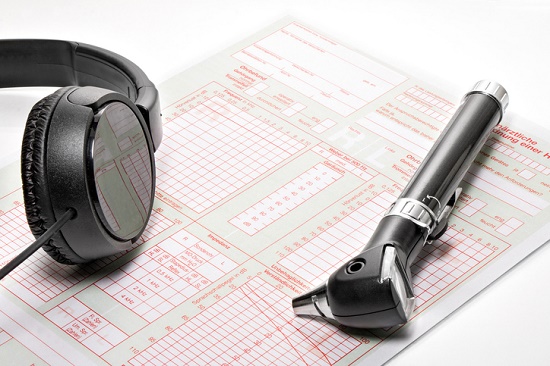
The hearing test really is the easy part. The tricky part is acknowledging your hearing loss and actually booking the hearing test in the first place.
You’ve most likely read the statistics by now: 48 million individuals in the US suffer from hearing loss but only a minor fraction actually do something about it, and only 20 percent of those who could benefit from hearing aids actually utilize them.
So if you’ve already set up your hearing test, congrats, you’ve already conquered the most significant impediment to better hearing.
The hearing exam, as you’ll witness, is an easy, non-invasive process that will pinpoint the magnitude of your hearing loss to help determine the most suitable method of treatment.
Shortly after you first arrive at the office, you’ll begin by submitting some paperwork. Then, you’ll consult with your hearing care provider to discuss your hearing health history.
Your Hearing Health History
Your hearing loss, if present, can be a consequence of direct exposure to loud sound, the natural aging process, or by an underlying condition. You’ll want to exclude any underlying medical conditions prior to moving on to the actual hearing test.
If you have an earwax impaction, as an example, you could be hearing better within minutes after a professional cleaning. The existence of any other ailments will be examined and the appropriate referral made, if required.
After a review of your basic medical history, you’ll review your subjection to loud sounds, your hearing loss symptoms, and exactly what you would like to accomplish with better hearing.
It’s imperative to determine potential causes, how symptoms are negatively affecting your life, and how better hearing will improve your life, which is after all the whole point. Be suspicious of the practitioner that doesn’t appear to really care about the reasons why you want to enhance your hearing in the first place.
Testing Your Hearing
There’s one more step prior to starting the hearing test: the visual investigation of the ear with a device known as an otoscope. This will help in ruling out any problems with the ear canal, the eardrum, or the excessive accumulation of earwax.
Next, you’ll be accompanied to a sound-treated room with your hearing care professional. You’ll be instructed to put on headphones, and the provider will start to play you some sounds.
You will be presented with a variety of sounds at multiple frequencies, and you’ll be requested to identify the quietest sounds you can hear at each pitch. This is called your hearing threshold, and the hearing care professional will log these values on a diagram known as an audiogram.
The hearing test may also incorporate speech testing, where you’ll be asked to repeat the words delivered to you. Assorted types of words, delivered at various volumes with and without background noise, will be introduced. This will help confirm if hearing aids can help you with speech comprehension.
At the conclusion of the testing, your hearing care professional will go over the final results with you.
Assessing Your Hearing Test Results
Referring to your audiogram, your hearing care provider will now review your hearing in both ears. Contingent on the results, your hearing will be categorized as normal or as exhibiting mild, moderate, severe, or profound hearing loss.
If a hearing loss is present, the next move is talking about your treatment options. Since there are no present medical or surgical treatments to restore hearing damage, this means evaluating your hearing aid options.
Contemporary hearing aids are available in a wide range of shapes, sizes, and colors, at a variety of price ranges with a number of advanced features. In choosing your hearing aids, it’s essential to work with a competent hearing care professional for three main reasons:
- They can help you find the best hearing aid model to satisfy all of your objectives.
- They can help you determine the advanced functions you need—as well as with the ones you don’t—at a price tag that suits your budget.
- They can program your new hearing aids to enhance only the sounds you have trouble hearing—determined by the hearing test—ensuring the best possible sound quality.
And that’s it, a quick, simple process in exchange for a lifetime of healthier hearing. We’d say that’s a very good deal.
We look forward to seeing you!
